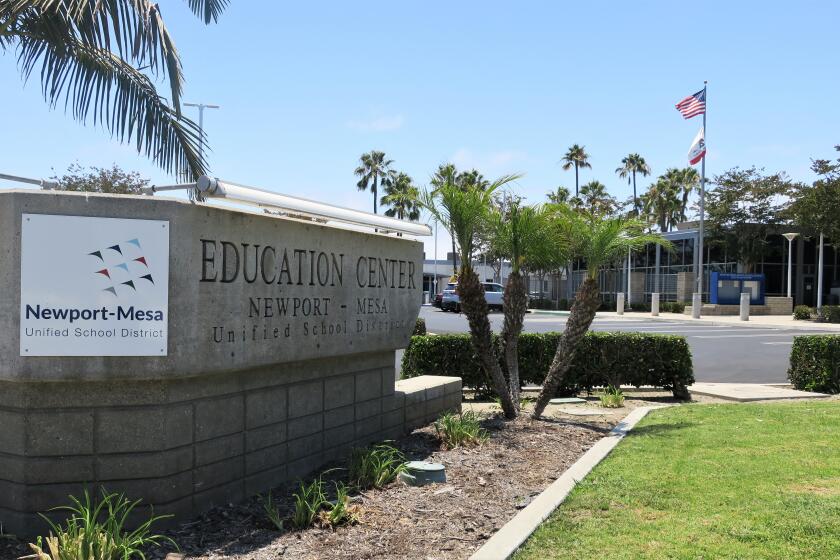Costa Mesa designates April as Coyote Awareness Month and approves further informational efforts to manage them
It’s official: April is now Coyote Awareness Month in Costa Mesa.
But even with that designation — which the City Council unanimously approved Tuesday night — officials emphasized that taking precautions to avoid run-ins with the wild canines should be an ongoing effort.
To that end, the council authorized additional educational and outreach efforts meant to supplement Costa Mesa’s existing coyote management plan — such as establishing a Google voice hotline and email address so people can report and learn more about coyote activity, holding two community meetings every April with animal-control staff and continuing training residents on what they should do when they see coyotes and how they can discourage them from going into their neighborhoods.
The goal is to “provide the community [with] a heightened awareness of coyote activity prior to the active coyote season,” which is typically May through December, said police Lt. Victor Bakkila.
Costa Mesa residents have complained for years of aggressive coyotes entering their neighborhoods and attacking their pets.
In the past 30 days, about 20 coyote sightings or encounters in Costa Mesa were logged with Coyote Cacher, an online reporting system.
The reports range from fairly benign — like a coyote running down a sidewalk outside Fairview Park — to violent, such as the canines hunting neighborhood cats, snatching a pet Pomeranian in Tanager Park and killing two backyard chickens near Del Mesa Park.
Costa Mesa’s management plan — implemented in 2017 — calls for removing things that attract coyotes, such as outdoor food and water sources, and cutting overgrown plants that they can use as cover.
It also outlines strategies for “hazing” coyotes: yelling or making loud noises to scare them away and, ideally, discourage them from returning.
“Information and training on coyote behavior and proper hazing techniques can mitigate negative interactions between community members and coyotes,” Bakkila said.
Some residents, though, have questioned the long-term effectiveness of those strategies and urged the city to take more direct action to curtail or control the local population, perhaps by trapping and neutering some of the creatures.
“The basic problem with the entire program is that it’s predicated on a premise that the coyotes were here first, they’re here to stay and we must learn to peacefully coexist with them, no matter what the cost,” said resident Al Melone, a former City Council candidate.
“You tell us we have to live in an urban city where our backyards are no longer available to our pets and if unattended pets are slaughtered by coyotes ... that’s OK?”
Councilman Manuel Chavez said the open spaces that Costa Mesa residents enjoy are attractive for coyotes as well. It’s incumbent on pet owners, he said, to be vigilant and help ensure the safety of their four-legged companions.
“I understand we’re an urban area, but we still have these coyotes around us,” he said. “They’re the apex predator in our area. We have to protect our animals, because they’re our family.”
Officials said Tuesday that efforts to eradicate coyotes would likely be ineffective, as others would move in to fill the void. Sterilization also wouldn’t necessarily be a magic bullet, as unaffected coyotes could ultimately produce more pups to make up the gap.
“We definitely explored the idea of reducing the coyote population — I don’t see that there’s a feasible way to do it,” said Mayor Pro Tem John Stephens. “I don’t think killing more coyotes is a reasonable solution. I don’t think trapping and sterilizing is a reasonable solution … the idea here is education.”
Though Councilman Allan Mansoor voted in favor of the strategies discussed Tuesday night, he said he was “a bit skeptical. I don’t think it does a whole lot. I think it’s more of the same.”
“The problem with it is there’s nothing that’s really measurable,” he said. “I think we need to ask ourselves, ‘How many incidents are we going to allow before real action is taken?’ And we need to define what real action is.”
All the latest on Orange County from Orange County.
Get our free TimesOC newsletter.
You may occasionally receive promotional content from the Daily Pilot.




